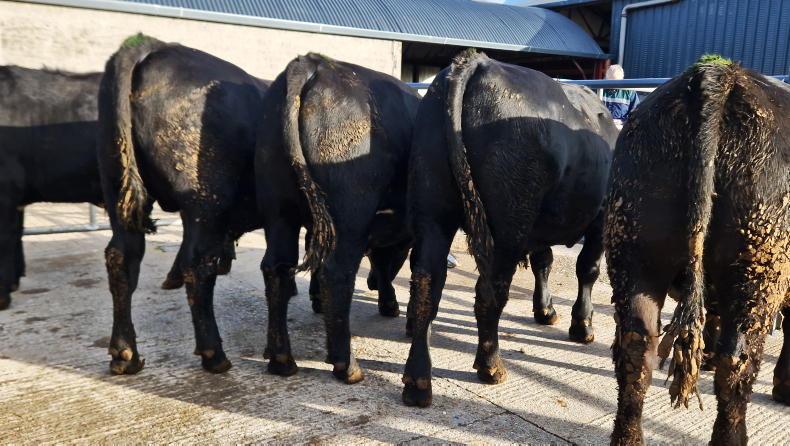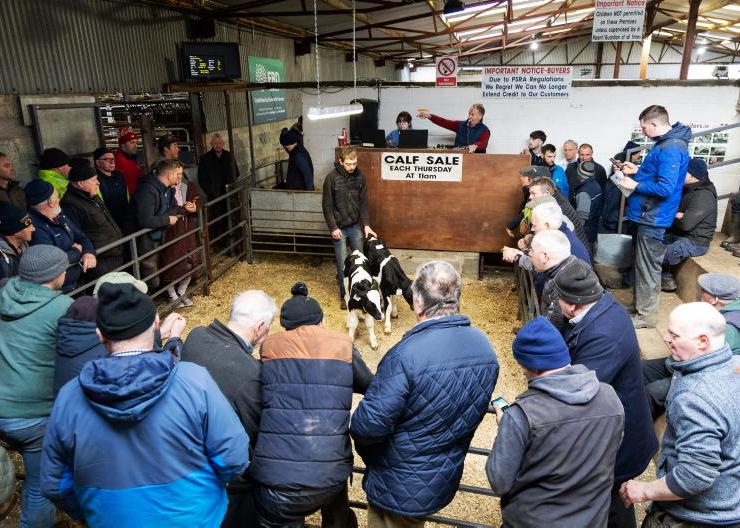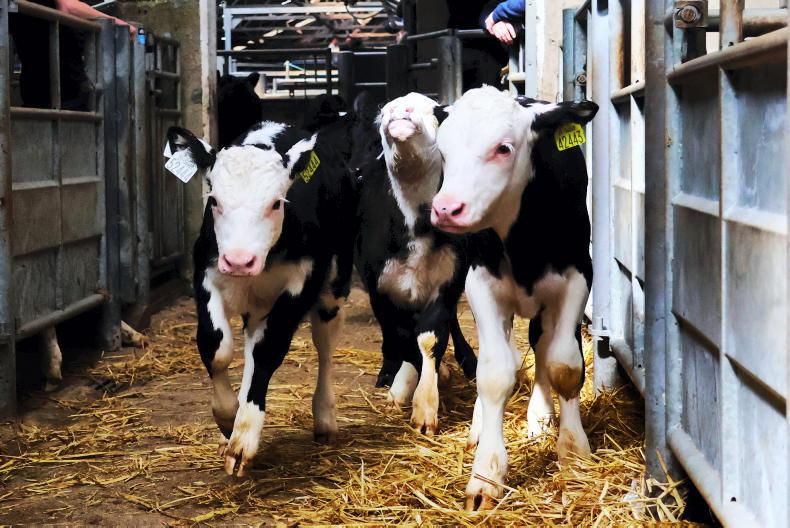Within every batch of stock, there is going to be a range in quality and animal performance.
On the Thrive demo farm, where just shy of 150 one-and-a-half-year-old cattle were drafted for slaughter this autumn, this fact is no different.
Although every calf is sired by a high beef merit, dairy beef index (DBI) bull, the variation in what the cow is bringing to the table is still quite large.
Variation
This variation can be costly, especially in a calf-to-beef system where it is nearly impossible to tell when purchasing calves at a few weeks old which one will let you down on the grading system come the time of slaughter.
Sure, everyone can pick out the really poor animal and the exceptionally good one, but the subtle differences between the rest is where the issues arise.
Of the 146 animals drafted on the demo farm this year, 119 of them were Angus and Hereford sired and, for this comparison, we will only deal with these breeds.
Bringing in the continental breeds skews the results slightly, as they are a very different animal, different calf price and different payment structure at the point of slaughter (ie no breed bonus payment). The continentals will be looked at in more detail in the days to come.
Conformation score
Of the 119 animals, nine graded O- or worse. This translates to just shy of 8%, so it is not a huge proportion, but in a tight-margin game, this bottom proportion drags down the overall profitability of the system.
In terms of carcase value, it extends to the tune of €233/head difference and up to €250/head in net margin compared with the animals that graded R-.
The difference between the two groups of cattle stretches far beyond the beef price paid on the day.
The O- cattle were older (12 days), which meant they had higher feed costs and were lighter at the time of slaughter than the R- cattle and, therefore, had a greater cost/kg of output.
In all, the Hereford and Angus cattle graded as follows:
8% graded O- or lower.29% graded O=.52% graded O+.11% graded R-.Carcase weight
While it may be expected that the O- cattle would have been much lighter than the average in terms of carcase weight, this was not the case, with an average weight of 288kg, while the O= and O+ weighed 284kg and 283kg respectively.
However, the R- cattle were significantly heavier, with an average carcase weight of 307kg.
Beef price paid
Slipping into an O- grade results in a 24c/kg grid price deduction on the base price quoted, while another 8c/kg is knocked off the 20c/kg in-spec bonus payment.
On top of this, for Angus and Hereford cattle, the breed bonus payment is typically eliminated on O- cattle. In all, it can mean a total price deduction in the region of 42c/kg to 52c/kg in total compared with an R grading animal.
Calf price
As stated earlier, identifying these poor grading animals is currently very hard to do when they are being purchased at three weeks old. The average calf price for the two extreme groups was similar at €207/head and €211/head.
Accurate commercial beef values (CBV) will be a huge help in identifying these animals that are going to be lighter and grade more poorly in the future.
Margin
In terms of gross margin, which is just accounting for the direct costs associated with the rearing of the animal, the R- cattle left €623/head on average, while the O- cattle left €372/head, a €251/head difference.
Remember that gross margin is not the actual margin, there are fixed costs to be added to the overall costs. On average, the 2021-born early-maturing stock left a net margin of €215/head.
Within every batch of stock, there is going to be a range in quality and animal performance.
On the Thrive demo farm, where just shy of 150 one-and-a-half-year-old cattle were drafted for slaughter this autumn, this fact is no different.
Although every calf is sired by a high beef merit, dairy beef index (DBI) bull, the variation in what the cow is bringing to the table is still quite large.
Variation
This variation can be costly, especially in a calf-to-beef system where it is nearly impossible to tell when purchasing calves at a few weeks old which one will let you down on the grading system come the time of slaughter.
Sure, everyone can pick out the really poor animal and the exceptionally good one, but the subtle differences between the rest is where the issues arise.
Of the 146 animals drafted on the demo farm this year, 119 of them were Angus and Hereford sired and, for this comparison, we will only deal with these breeds.
Bringing in the continental breeds skews the results slightly, as they are a very different animal, different calf price and different payment structure at the point of slaughter (ie no breed bonus payment). The continentals will be looked at in more detail in the days to come.
Conformation score
Of the 119 animals, nine graded O- or worse. This translates to just shy of 8%, so it is not a huge proportion, but in a tight-margin game, this bottom proportion drags down the overall profitability of the system.
In terms of carcase value, it extends to the tune of €233/head difference and up to €250/head in net margin compared with the animals that graded R-.
The difference between the two groups of cattle stretches far beyond the beef price paid on the day.
The O- cattle were older (12 days), which meant they had higher feed costs and were lighter at the time of slaughter than the R- cattle and, therefore, had a greater cost/kg of output.
In all, the Hereford and Angus cattle graded as follows:
8% graded O- or lower.29% graded O=.52% graded O+.11% graded R-.Carcase weight
While it may be expected that the O- cattle would have been much lighter than the average in terms of carcase weight, this was not the case, with an average weight of 288kg, while the O= and O+ weighed 284kg and 283kg respectively.
However, the R- cattle were significantly heavier, with an average carcase weight of 307kg.
Beef price paid
Slipping into an O- grade results in a 24c/kg grid price deduction on the base price quoted, while another 8c/kg is knocked off the 20c/kg in-spec bonus payment.
On top of this, for Angus and Hereford cattle, the breed bonus payment is typically eliminated on O- cattle. In all, it can mean a total price deduction in the region of 42c/kg to 52c/kg in total compared with an R grading animal.
Calf price
As stated earlier, identifying these poor grading animals is currently very hard to do when they are being purchased at three weeks old. The average calf price for the two extreme groups was similar at €207/head and €211/head.
Accurate commercial beef values (CBV) will be a huge help in identifying these animals that are going to be lighter and grade more poorly in the future.
Margin
In terms of gross margin, which is just accounting for the direct costs associated with the rearing of the animal, the R- cattle left €623/head on average, while the O- cattle left €372/head, a €251/head difference.
Remember that gross margin is not the actual margin, there are fixed costs to be added to the overall costs. On average, the 2021-born early-maturing stock left a net margin of €215/head.










SHARING OPTIONS